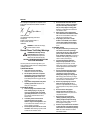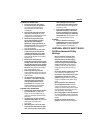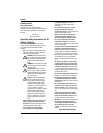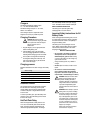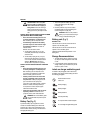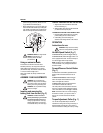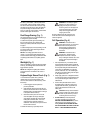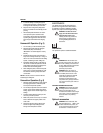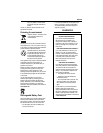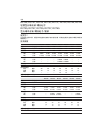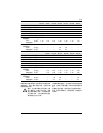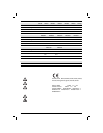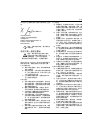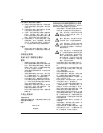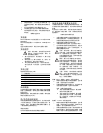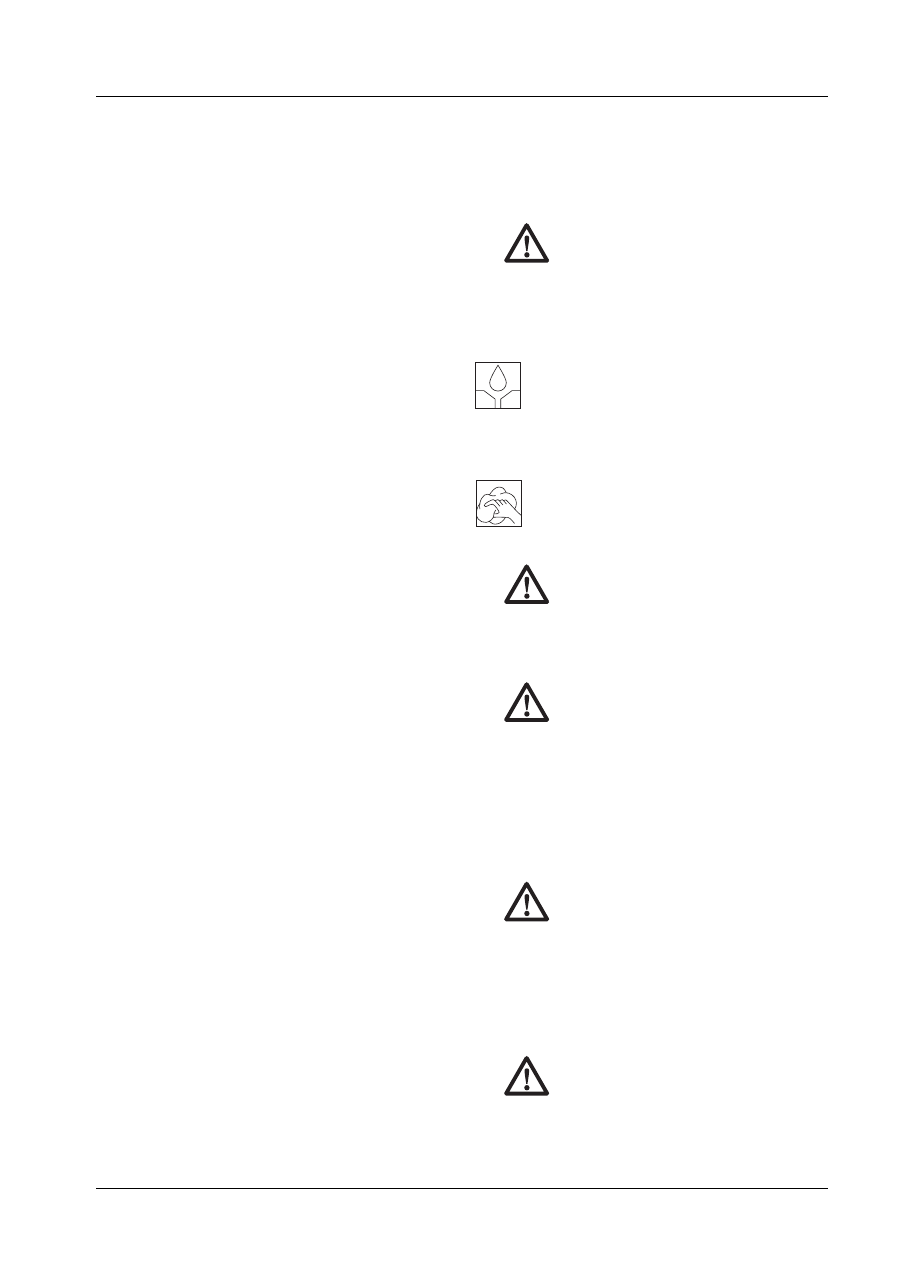
ENGLISH
15
5. To minimize stalling or breaking through the
material, reduce pressure on drill and ease the
bit through the last fractional part of the hole.
6. Keep the motor running when pulling the bit
back out of a drilled hole. This will help prevent
jamming.
7. With variable speed drills there is no need to
center punch the point to be drilled. Use a
slow speed to start the hole and accelerate by
squeezing the trigger harder when the hole is
deep enough to drill without the bit skipping
out.
Hammerdrill Operation (fi g. 5)
1. Turn the collar (c) to the hammerdrill symbol.
2. Select the high speed setting by sliding the
selector back (away from the chuck).
IMPORTANT: Use carbide-tipped or masonry
bits only.
3. Drill with just enough force on the hammer to
keep it from bouncing excessively or “rising” off
the bit. Too much force will cause slower drilling
speeds, overheating and lower drilling rate.
4. Drill straight, keeping the bit at a right angle to
the work. Do not exert side pressure on the bit
when drillling as this will cause clogging of the
bit flutes and a slower drilling speed.
5. When drilling deep holes, if the hammer speed
starts to drop off, pull the bit partially out of the
hole with tool stil running to help clear debris
from the hole.
NOTE: A smooth, even flow of dust from the hole
indicates proper drilling rate.
Screwdriver Operation (fi g. 6)
1. Select the desired speed/torque range using the
dual range gear selector to match the speed
and torque of the planned operation.
2. Turn the torque adjustment collar to the desired
position. Lower numbers indicate lower torque
settings; higher numbers indicate higher torque
settings.
3. Insert the desired fastener accessory into the
chuck as you would any drill bit.
4. Make some practice runs in scrap or on unseen
areas to determine the proper position of the
clutch collar.
5. Always start with lower torque settings, then
advance to higher torque settings to avoid
damage to the workpiece or fastener.
MAINTENANCE
Your DEWALT power tool has been designed to
operate over a long period of time with a minimum
of maintenance. Continuous satisfactory operation
depends upon proper tool care and regular cleaning.
WARNING: To reduce the risk of
injury, turn unit off and disconnect
tool from power source before
installing and removing accessories,
before making any adjustments or
removing/installing attachments or
accessories.
Lubrication
Your power tool requires no additional lubrication.
Cleaning
WARNING: Blow dirt and dust out of
the main housing with dry air as often as
dirt is seen collecting in and around the
air vents. Wear approved eye protection
and approved dust mask when
performing this procedure.
WARNING: Never use solvents or
other harsh chemicals for cleaning the
non-metallic parts of the tool. These
chemicals may weaken the materials
used in these parts. Use a cloth
dampened only with water and mild
soap. Never let any liquid get inside the
tool; never immerse any part of the tool
into a liquid.
CHARGER CLEANING INSTRUCTIONS
WARNING: Shock hazard. Disconnect
the charger from the AC outlet before
cleaning. Dirt and grease may be
removed from the exterior of the charger
using a cloth or soft non-metallic brush.
Do not use water or any cleaning
solutions.
Optional accessories
WARNING: Since accessories, other
than those offered by D EWALT, have
not been tested with this product, use
of such accessories with this tool could
be hazardous. To reduce the risk of



